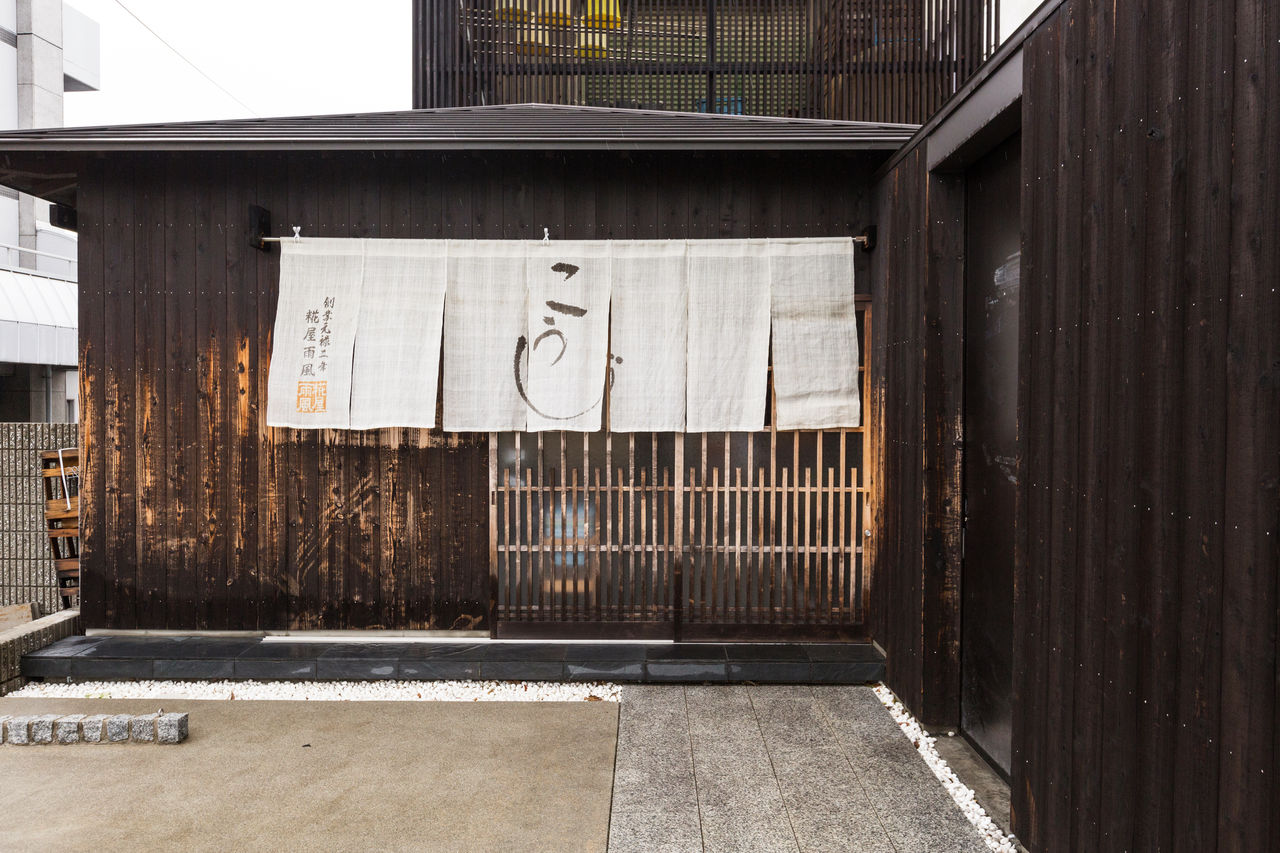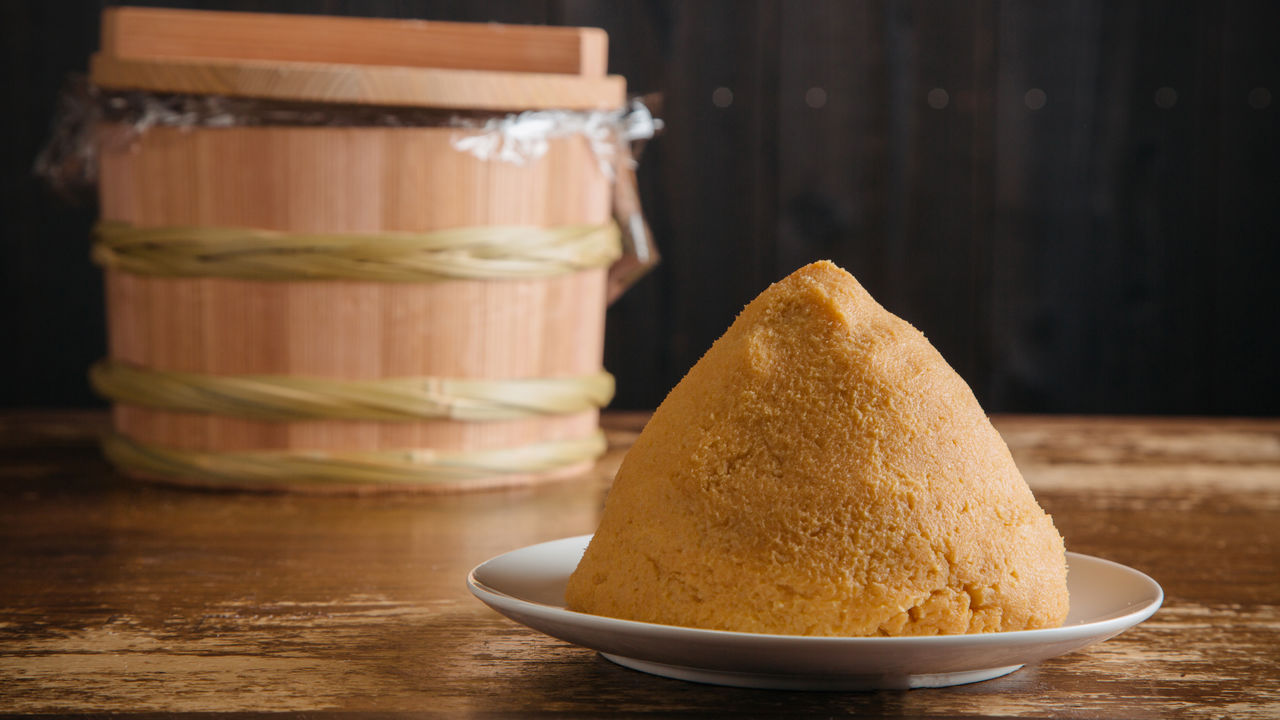
Three Centuries of Miso: Osaka’s Kōjiya Amekaze
Guideto Japan
- English
- 日本語
- 简体字
- 繁體字
- Français
- Español
- العربية
- Русский
The Flavor of Home
“Miso keeps the doctor away,” as the Edo-period (1603–1868) saying goes—or, according to another, “Miso soup in the morning counteracts poison.” Both go to show how much this traditional fermented soy seasoning has been loved and cherished in Japan as an important source of nutrition.
Founded in 1689 and based in Sakai, Osaka Prefecture, Kōjiya Amekaze offers miso-making classes year-round on a reservation basis. Fermented foods have been enjoying unprecedented popularity in recent years among diners looking to them for beauty and health benefits, and homemade miso has seen a boom in Japan as this trend goes forward.
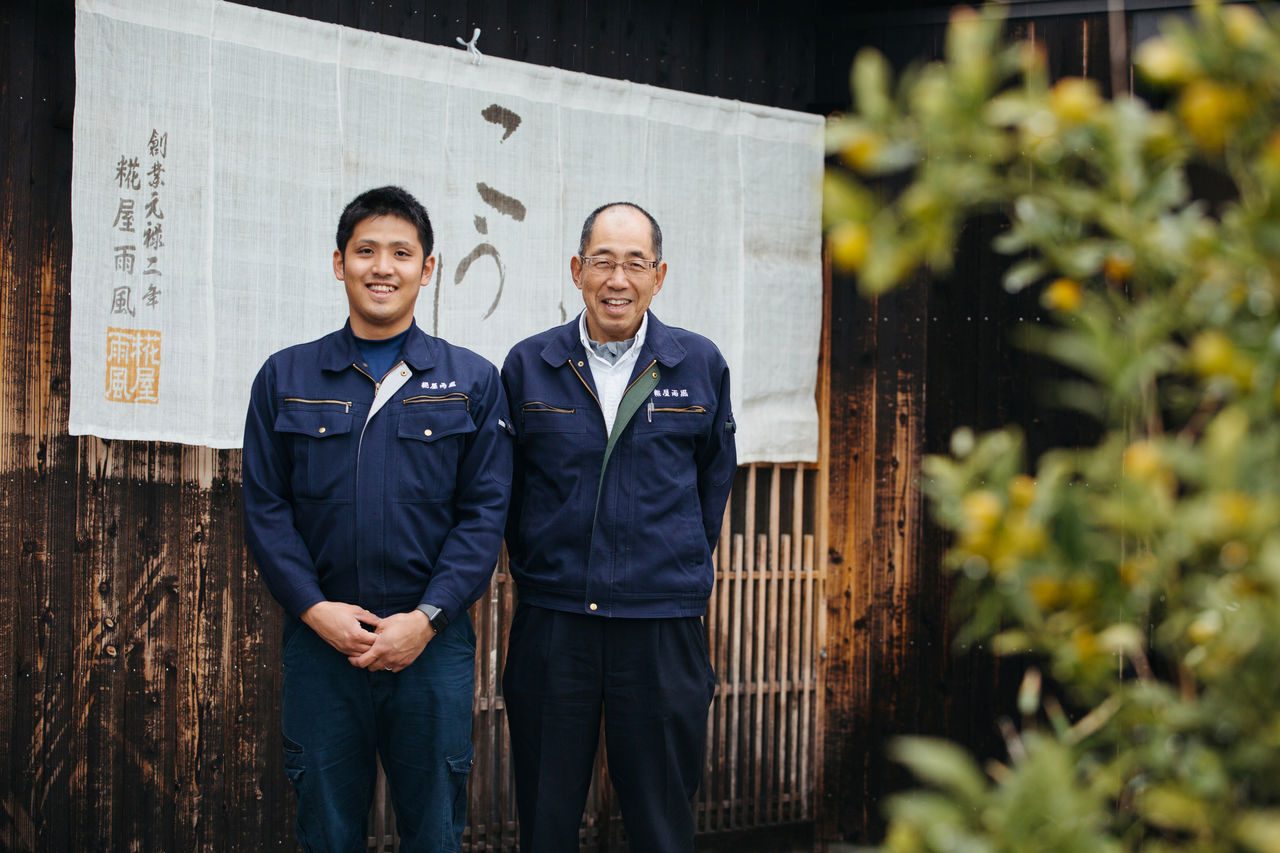 Toyoda Minoru (right), the fifteenth-generation proprietor of Kōjiya Amekaze, with his son Nobuhiro. The store is a family-run business. (© Yamazaki Yoshinori)
Toyoda Minoru (right), the fifteenth-generation proprietor of Kōjiya Amekaze, with his son Nobuhiro. The store is a family-run business. (© Yamazaki Yoshinori)
“Temae miso, an expression signifying self-praise, originally referred to homemade miso,” explains Toyoda Nobuhiro, the sixteenth generation in the family that owns Kōjiya Amekaze. “In the old days, the miso made in each household symbolized the taste of home.” Even today, homes in the Senshū region of Osaka, where Sakai is located, observe the custom of celebrating the New Year with miso that they prepared in the fall using newly harvested soybeans and rice.
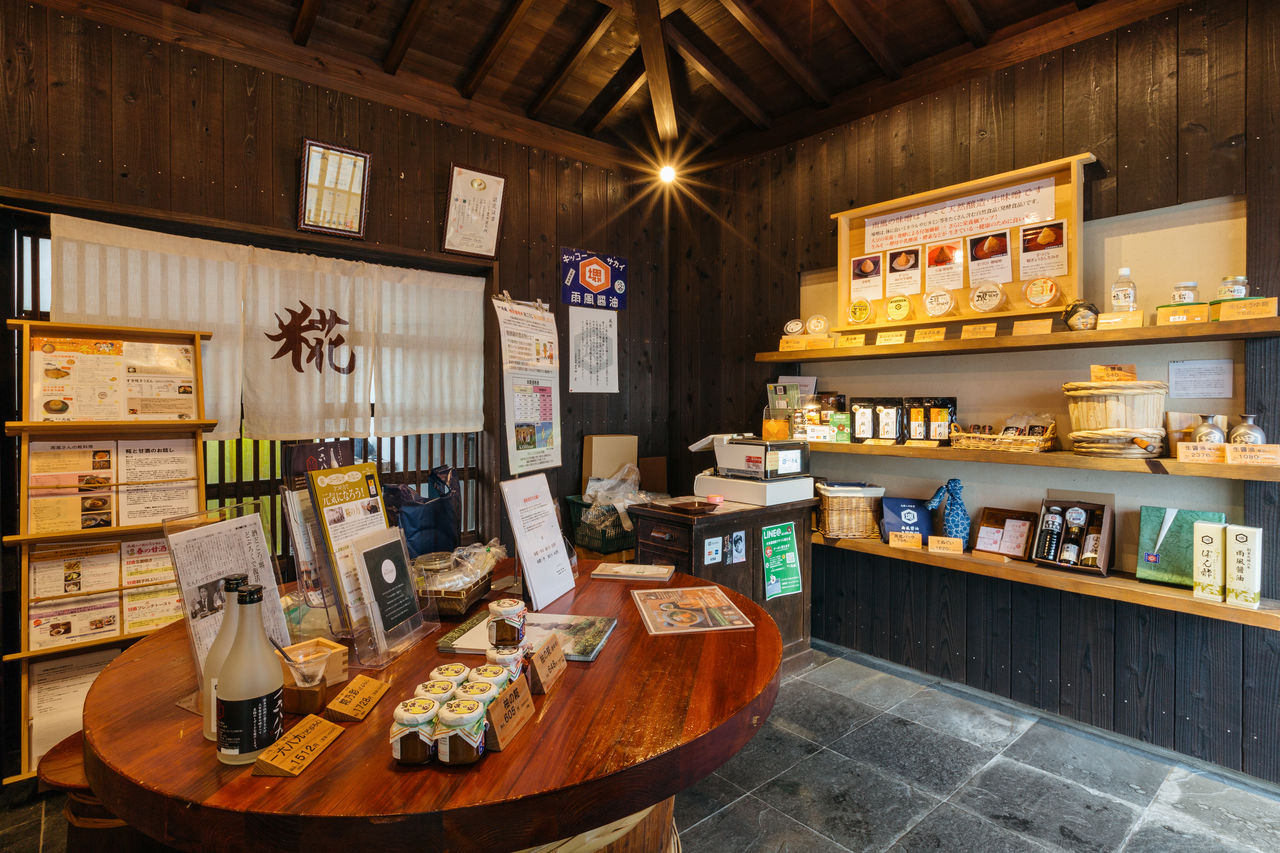 Inside the Kōjiya Amekaze store, food products made with kōji cultured on the premises, including miso, soy sauce, and amazake (a sweet fermented rice drink), line the shelves. (© Yamazaki Yoshinori)
Inside the Kōjiya Amekaze store, food products made with kōji cultured on the premises, including miso, soy sauce, and amazake (a sweet fermented rice drink), line the shelves. (© Yamazaki Yoshinori)
“Homemade miso is alive,” adds Nobuhiro. Much of the miso on the market is heat-sterilized prior to shipping, which halts the fermentation process. By contrast, homemade miso continues to ferment, meaning that the good stuff is not lost and consumers can enjoy changes in flavor over time as the miso ages.
Kōji: The Culprit of Fermentation
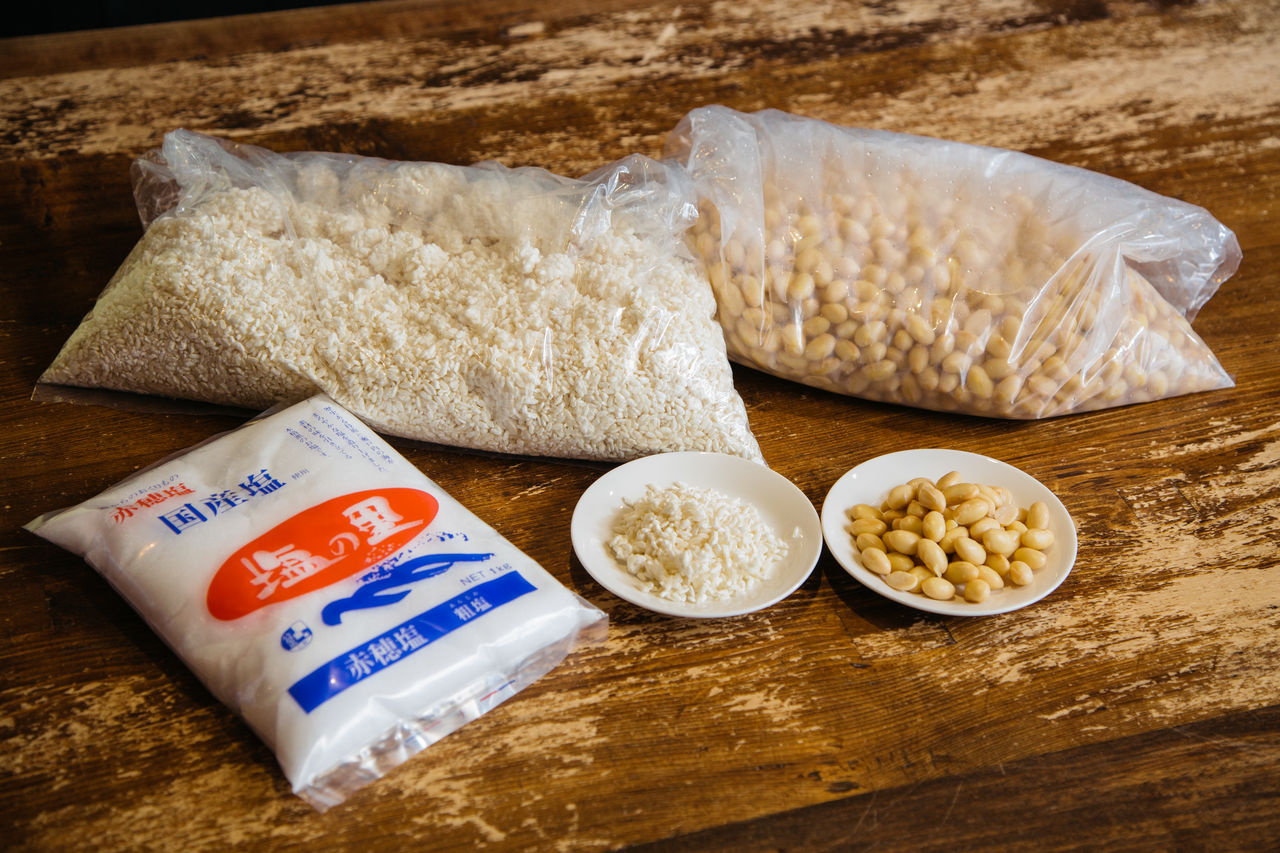 In the interest of safety and customer assurance, only made-in-Japan ingredients are used. (© Yamazaki Yoshinori)
In the interest of safety and customer assurance, only made-in-Japan ingredients are used. (© Yamazaki Yoshinori)
Rice miso (other popular kinds include soybean miso and barley miso) is commonly made with just three ingredients: soybeans, salt, and rice kōji, a form of mold (Aspergillus oryzae) grown on the grain. The miso traditionally made in Sakai uses soybeans and rice kōji at a 2:1 ratio.
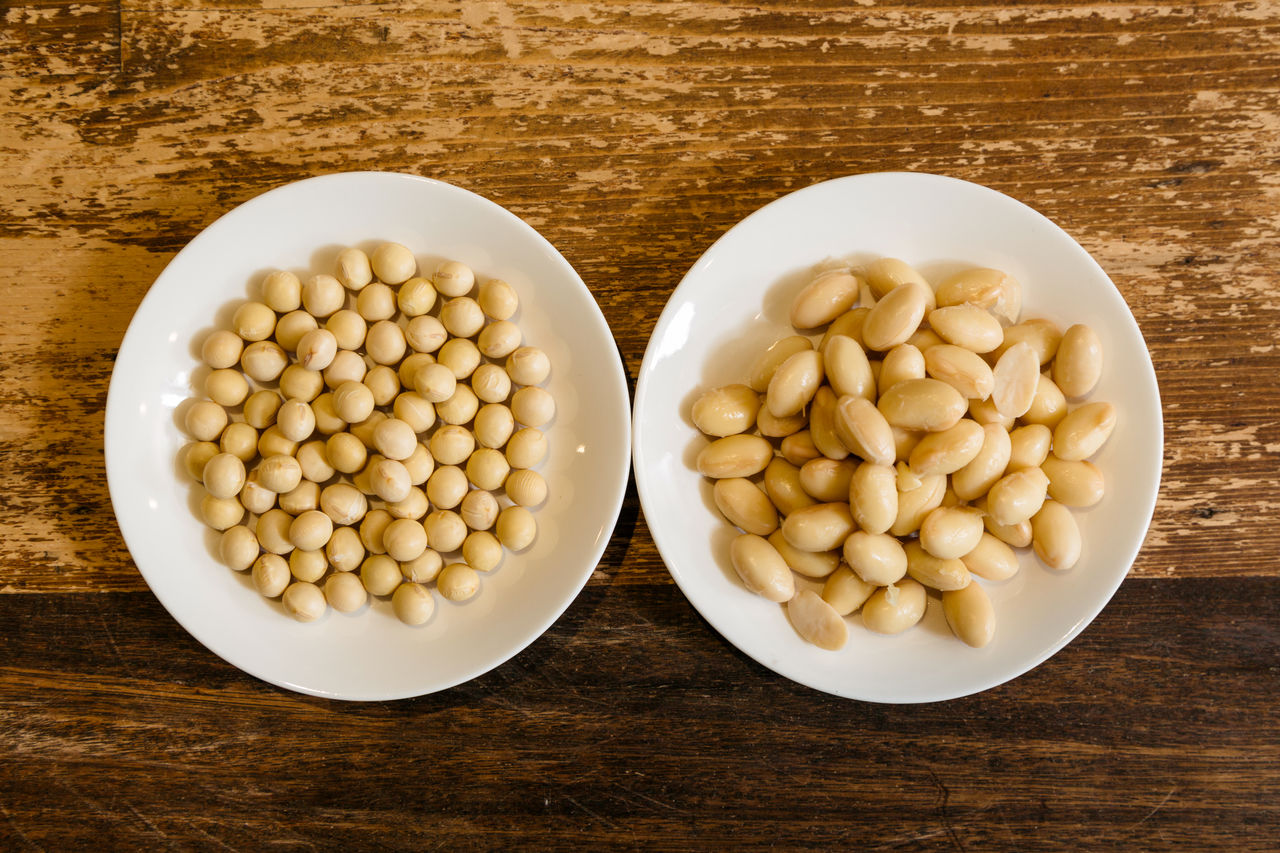 The soybeans are of a large, sweet Hokkaidō variety called Tsuru-musume. (© Yamazaki Yoshinori)
The soybeans are of a large, sweet Hokkaidō variety called Tsuru-musume. (© Yamazaki Yoshinori)
Kōji mold cultures, the key to fermentation, are thought to be unique to Japan’s cuisine. They are made by growing Aspergillus oryzae on steamed grains, such as rice or barley. “Although it’s a kind of mold, kōji is far from harmful and comes with many benefits, both for the taste buds and in terms of nutrition,” explains Nobuhiro.
Amekaze is a long-established specialist in kōji culturing. For over three centuries since its founding, it has used good old wooden utensils in its two-day process of making kōji cultures by hand.
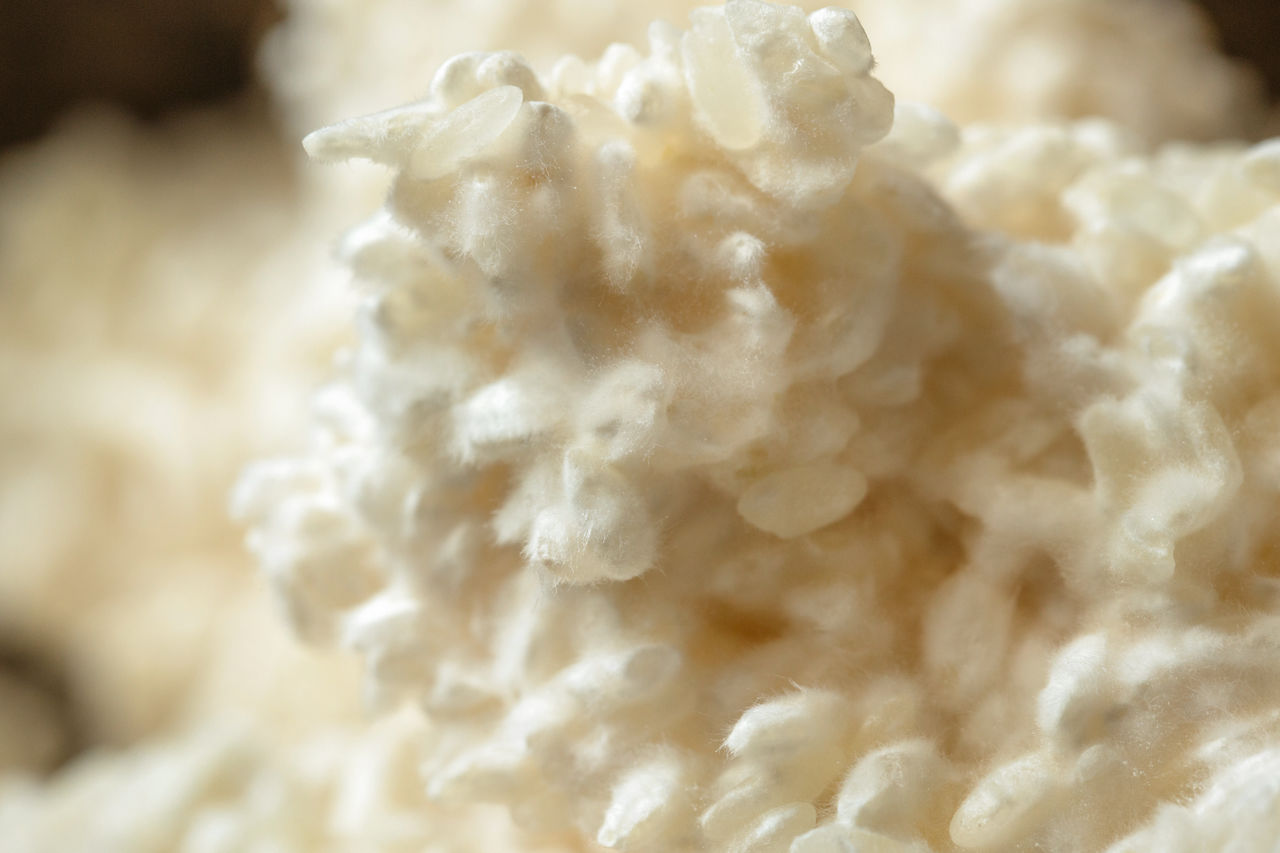 Rice kōji is made by growing the mold on steamed rice. The white fluff enveloping the rice consists of fungal filaments. (© Yamazaki Yoshinori)
Rice kōji is made by growing the mold on steamed rice. The white fluff enveloping the rice consists of fungal filaments. (© Yamazaki Yoshinori)
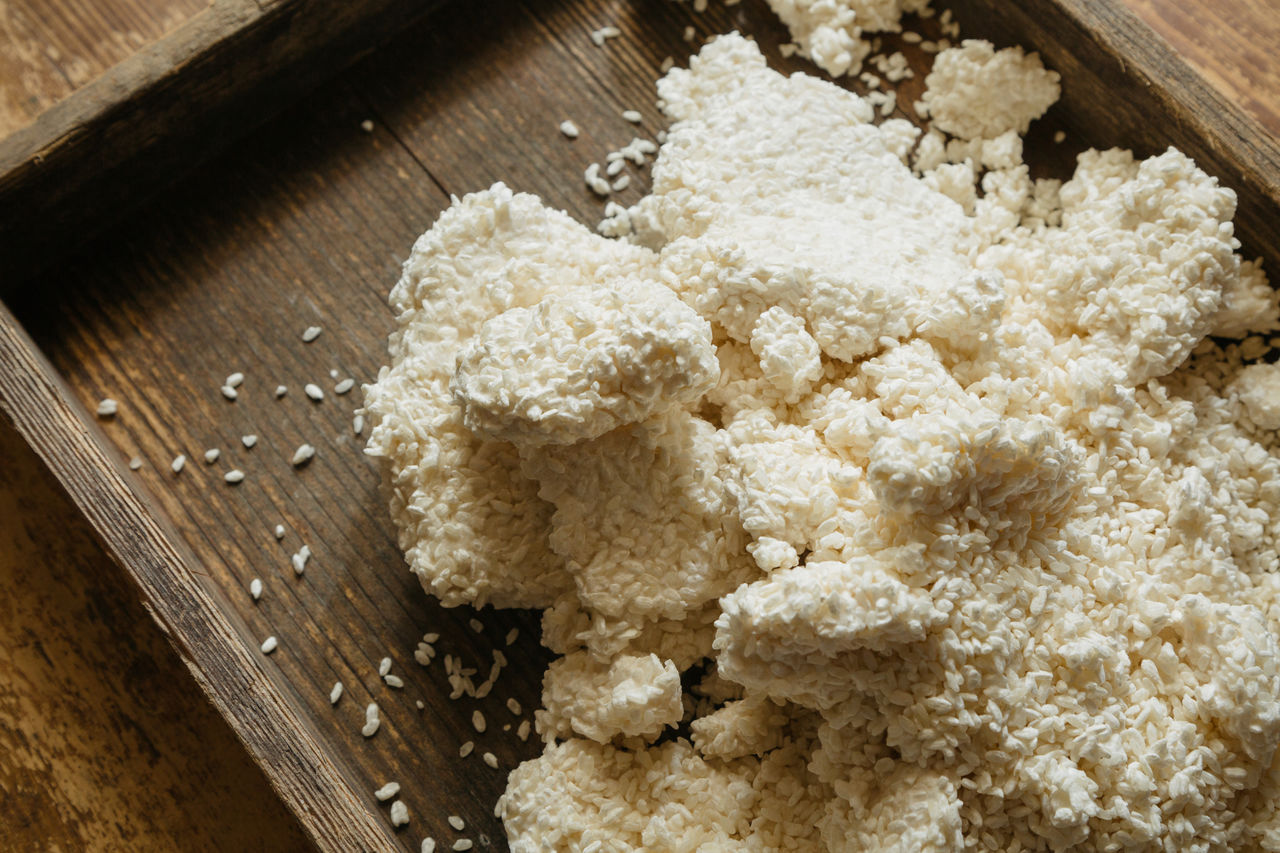 Kōji is indispensable in the production of not just miso but also sake, vinegar, and soy sauce. (© Yamazaki Yoshinori)
Kōji is indispensable in the production of not just miso but also sake, vinegar, and soy sauce. (© Yamazaki Yoshinori)
The enzymes generated in the fermentation of kōji break down the proteins and starches found in soybeans and rice into amino acids and sugars—which impart umami and sweetness, respectively, to food. This is what makes miso so flavorsome. Kōji also produces substances with anti-aging properties and those that reduce the risks of cancer and lifestyle-related diseases.
Hard Work Is the Best Ingredient
Miso-making class at Amekaze starts with the process of mashing boiled soybeans. Participants press a bag of boiled beans with their hands until the contents become a homogenous paste.
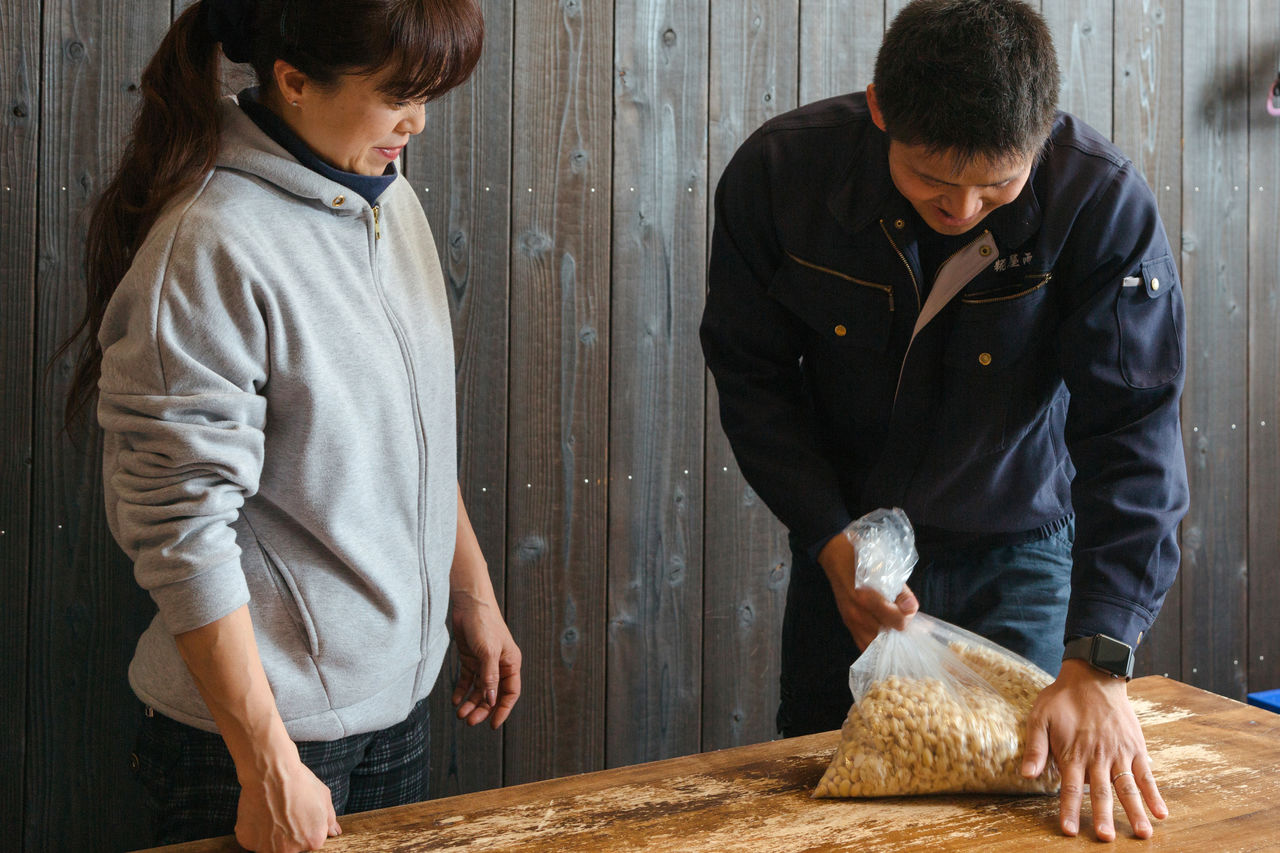 Boiled soybeans are mashed by hand in a plastic bag until the contents are smooth. (© Yamazaki Yoshinori)
Boiled soybeans are mashed by hand in a plastic bag until the contents are smooth. (© Yamazaki Yoshinori)
Next, rice kōji and salt (10%–13% of the total volume) are poured into a large basin and thoroughly blended by hand.
 Rice kōji and salt are stirred together in a basin. (© Yamazaki Yoshinori)
Rice kōji and salt are stirred together in a basin. (© Yamazaki Yoshinori)
 The mashed soybeans are added to the mixture. (© Yamazaki Yoshinori)
The mashed soybeans are added to the mixture. (© Yamazaki Yoshinori)
Adding the mashed soybeans, the participant further blends the ingredients. This takes some muscle power. “All the work you put into it will make the miso good,” participants are told as they toil away.
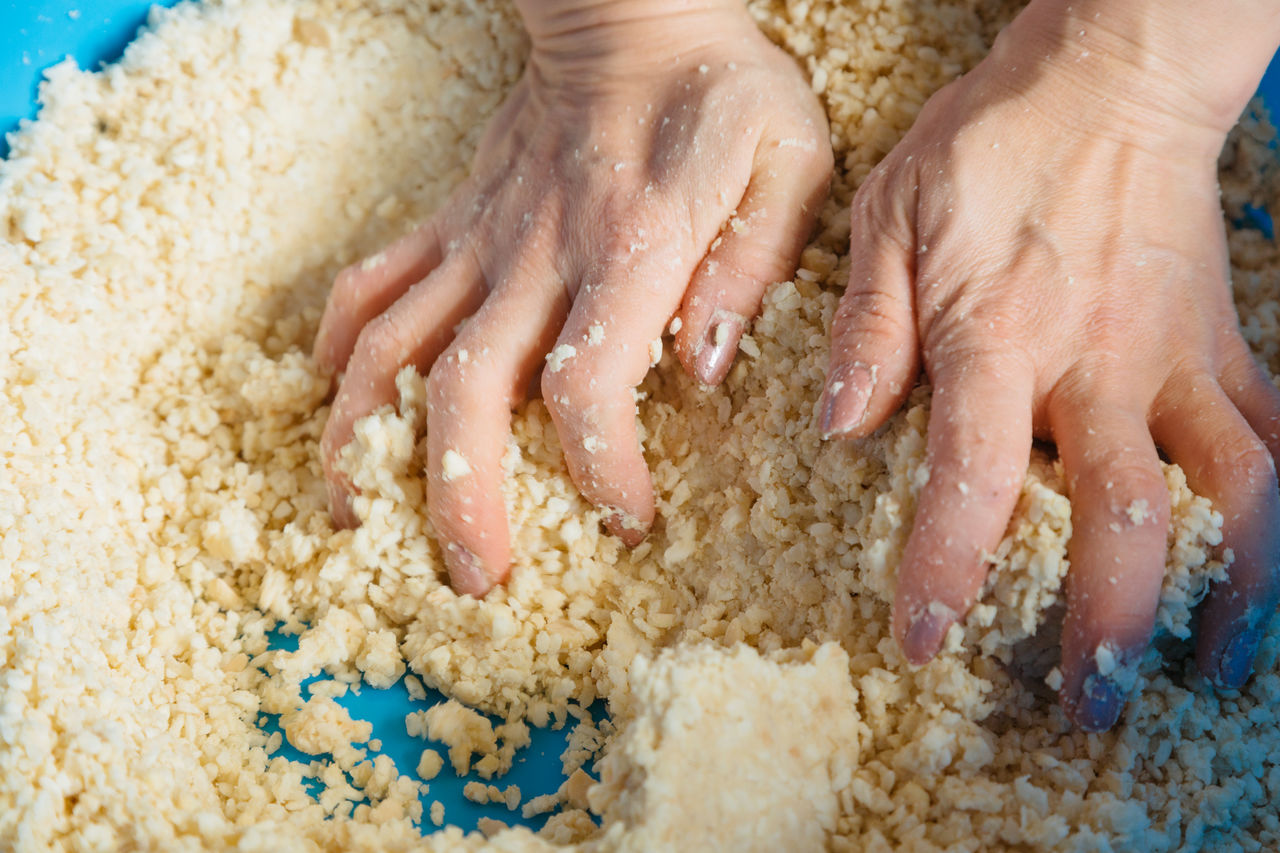 Mixing the ingredients very well is the key to making delicious miso. (© Yamazaki Yoshinori)
Mixing the ingredients very well is the key to making delicious miso. (© Yamazaki Yoshinori)
The resulting dough is shaped into baseball-size lumps before being stuffed into a container. Forming them into balls at this stage serves to expel air. The balls are then packed flat in the container.
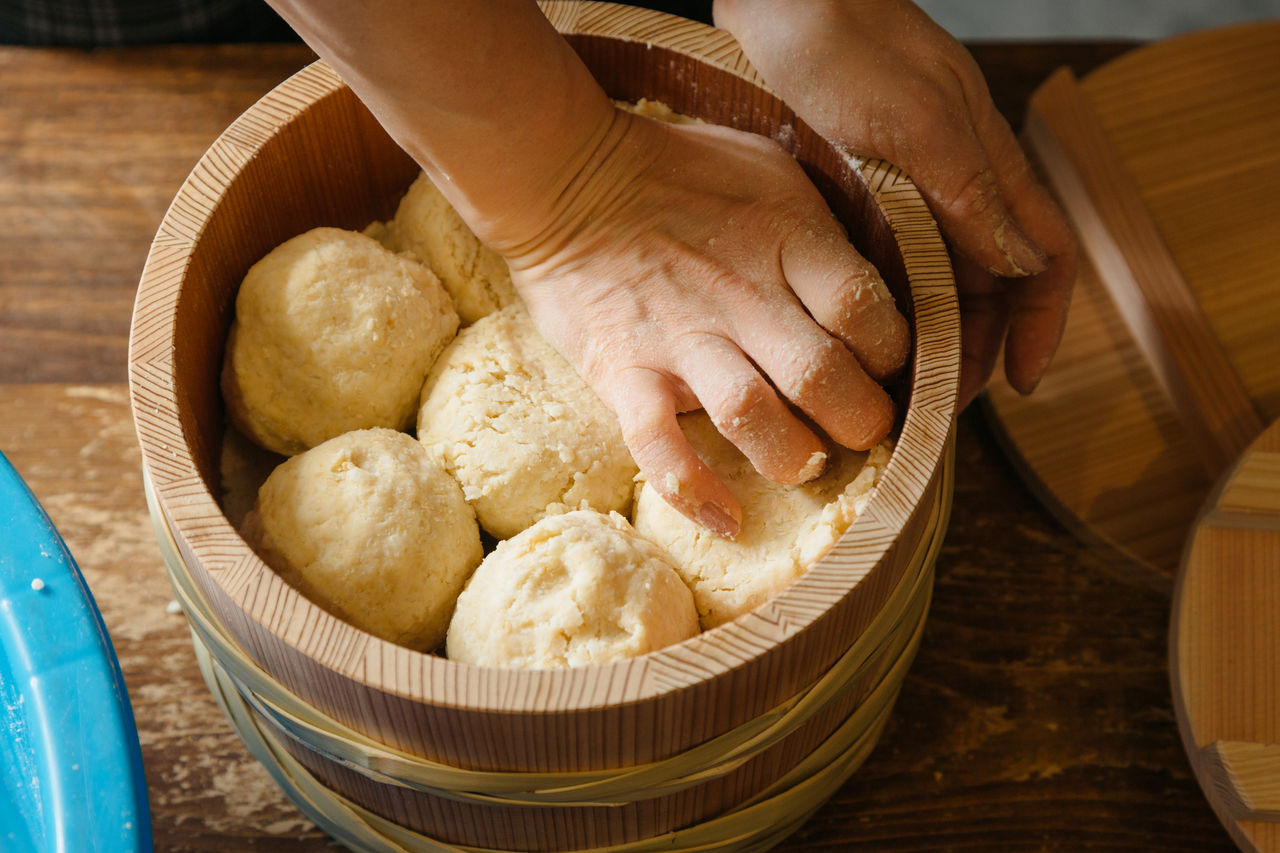 Molding the ingredients into “miso balls” helps remove air. The balls are then flattened in the container so as to keep air pockets from forming. (© Yamazaki Yoshinori)
Molding the ingredients into “miso balls” helps remove air. The balls are then flattened in the container so as to keep air pockets from forming. (© Yamazaki Yoshinori)
To finish, salt is sprinkled over the surface to prevent mold. The top is covered first with plastic wrap and then with a lid, completing the miso-preparing process. The paste is matured for three to six months in a cold, dark place, topped with a weight. (The ideal heaviness is about 30% of the total weight of the miso being produced; a plastic bag of salt can serve the purpose.) While the time needed for fermentation varies from season to season, the miso is ready to eat when clear liquid rises to the surface.
There is no better way to get to know the goodness of miso, one of Japan’s greatest fermented foods, than to experience making it yourself.
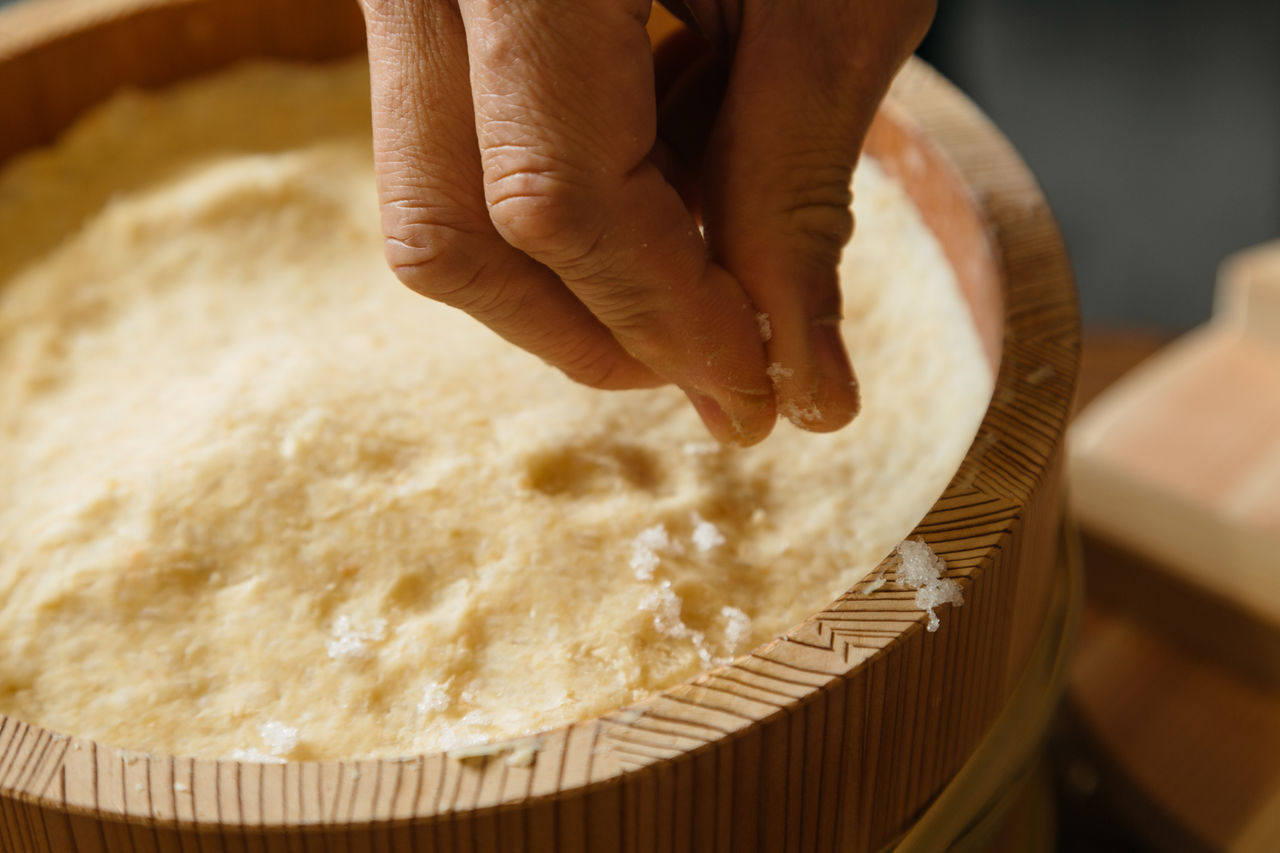 Salt is sprinkled over the top to finish. (© Yamazaki Yoshinori)
Salt is sprinkled over the top to finish. (© Yamazaki Yoshinori)
 About six months of maturing will yield delicious miso. (© Yamazaki Yoshinori)
About six months of maturing will yield delicious miso. (© Yamazaki Yoshinori)
After taking the miso-making class, visitors can enjoy a well-deserved break at Bio Topos, the café next door, which offers a variety of healthy lunches and desserts that make use of fermented ingredients produced at Amekaze, including salt kōji and amazake.
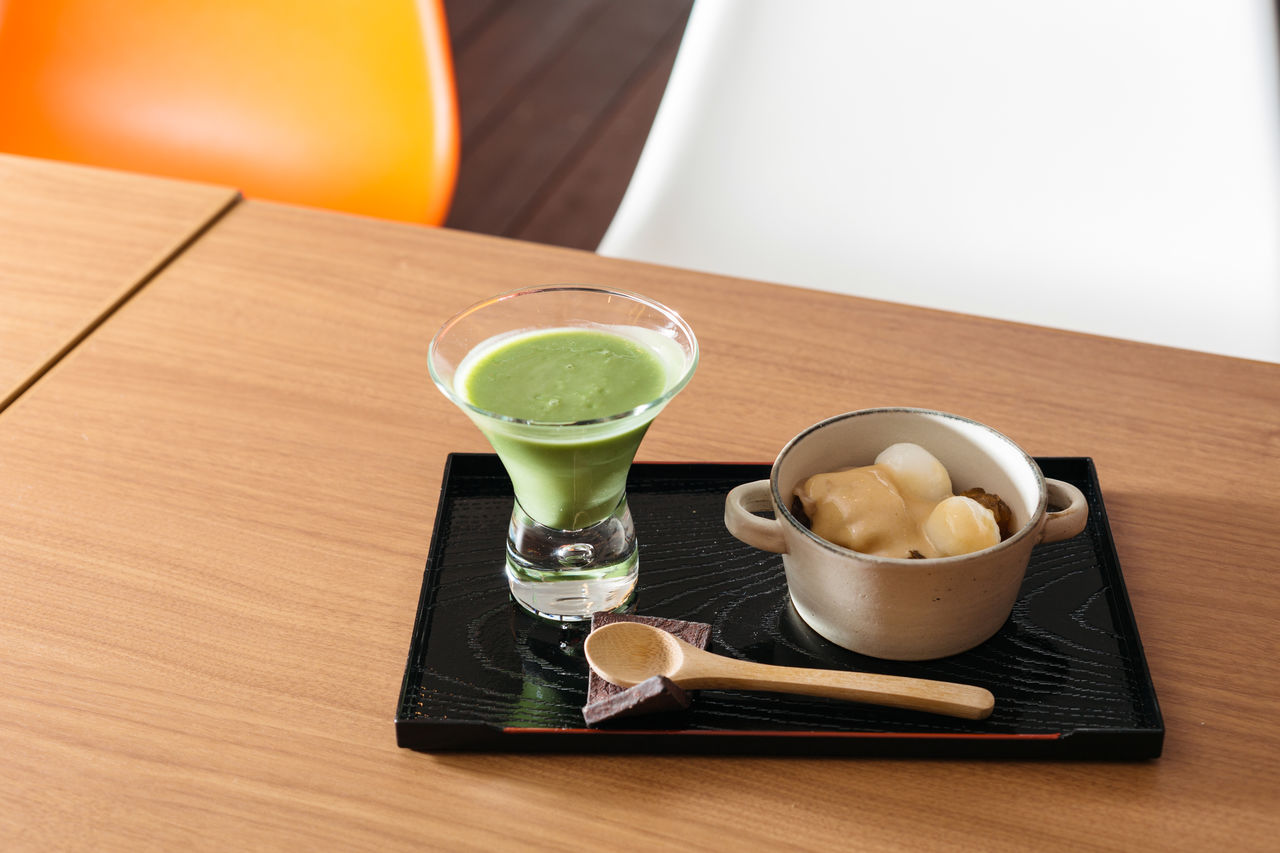 Dessert and drink set: anmitsu-style amazake shiratama (rice flour dumplings) with a matcha kōji drink. (© Yamazaki Yoshinori)
Dessert and drink set: anmitsu-style amazake shiratama (rice flour dumplings) with a matcha kōji drink. (© Yamazaki Yoshinori)
A note to international visitors: Carry-on baggage rules will apply to miso on international flights. If you are taking your miso home from Japan, you can either put it in an airtight container and check it in at the airline counter or, to carry it on board, pack it into small containers of up to 100 milliliters each and put them in a clear plastic zipper bag. To be safe, it would a good idea to inquire in advance with the airport or airline.
DATA
Kōjiya Amekaze
- Address: 3-32-11 Tsukunochō, Nishi-ku, Sakai, Osaka
- Tel.: 072-262-0333
- Official website: http://www.amekaze-sakai.com/english/index.html
- Access: 2-minute walk from Tsukuno station on the JR Hanwa line
- Hours: 9:00 am to 5:00 pm (store), 10:00 am to 6:00 pm (café)
- Closed Sundays (open every day from mid-November to mid-December)
- Miso-making class: Offered year-round; reservations required. See the website for the latest prices.
(Originally published in Japanese on June 8, 2018. Reporting and text by Yamaguchi Noriko. Photographs © Yamazaki Yoshinori.)
